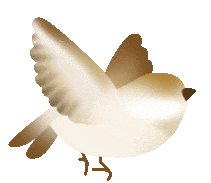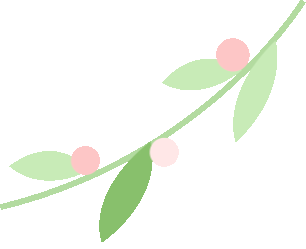

Everyone is familiar with the term “cold”; it first appeared during the Southern Song Dynasty. Officials often used the term “ganfeng” (感风) as an excuse for taking leave during night shifts. The literati of the Southern Song, such as Chen Hu, creatively adopted the term from the primary external causes of disease in Traditional Chinese Medicine (TCM) (wind, cold, heat, dampness, dryness, fire), leading to the term “ganfeng” becoming widely used. By the Qing Dynasty, this term evolved into “ganmao” (感冒), where “mao” means “to emerge,” indicating that one continues to work while ill after being affected by wind. The term “ganmao” then became common among the populace.
Colds are characterized by symptoms such as nasal congestion, runny nose, sneezing, headache, chills, fever, and general malaise. However, can you distinguish between a cold caused by wind-cold and one caused by wind-heat? For those who wish to treat it with Chinese medicine, are you taking the right herbs?

Wind-Cold Cold

Wind-cold colds are primarily caused by external invasion of wind-cold, which obstructs the defensive yang (卫阳), closes the pores, and prevents the lung qi from dispersing. The usual triggers are fatigue, lack of rest, and exposure to wind or cold, with higher incidence in autumn and winter.
The main symptoms include significant aversion to cold, slight fever, no sweating, headache, stiff neck, body aches, and in severe cases, pain, nasal congestion with a heavy sound, sneezing, runny clear nasal discharge, itchy throat, and thin white phlegm. Treatment options include wind-cold cold granules, cold soft capsules, and cold clearing granules, as well as acupuncture or massage at points such as Fengchi (风池), Dazhui (大椎), Fengmen (风门), and Feishu (肺俞). After taking medicine, drinking hot porridge or soup and inducing slight sweating can help disperse wind-cold.
If you feel cold after exposure to wind and adding clothing does not help, you can make ginger sugar drink (3-5 slices of fresh ginger, 1 tablespoon of brown sugar, steeped in hot water) and drink it hot while covered. If no sweating occurs, you can take it again after an hour. Li Shizhen in the “Compendium of Materia Medica” states that fresh ginger “promotes sweating when raw and harmonizes the stomach when cooked.” This indicates that ginger has the effect of inducing sweating and relieving exterior symptoms, while brown sugar, being warm in nature, can assist ginger in promoting sweating and aiding the stomach. This remedy is commonly used to prevent and treat colds from getting wet in the rain, and it is quite effective.

Wind-Heat Cold

Wind-heat colds are primarily caused by wind-heat invading the exterior, leading to heat stagnation in the muscles and loss of harmony in the defensive layer, resulting in the lung’s inability to clear and regulate. These are more common in the summer and autumn.
Clinical manifestations include more pronounced fever, slight aversion to wind, dry or sore throat, nasal congestion with yellow thick discharge, headache, cough with sticky or yellow phlegm, dry mouth with a desire to drink, and a red tip of the tongue. Treatment options include wind-heat cold granules, Yinqiao detoxifying granules, Banlan root granules, Sangju cold tablets, and Lianhua Qingwen capsules, as well as acupuncture or massage at points such as Dazhui (大椎), Hegu (合谷), Quchi (曲池), Chize (尺泽), Waiguan (外关), and Fengchi (风池). During treatment, avoid greasy, dry, hot, and spicy foods.
You can also make mint porridge by boiling 15 grams of mint to extract the juice, then adding 60 grams of japonica rice and water to cook porridge. When the porridge is nearly done, add the mint juice and an appropriate amount of rock sugar. Consume it warm for best results. Mint is a key herb for dispersing wind-heat, and adding japonica rice and rock sugar to make porridge promotes sweating while also protecting the stomach. This drink is particularly suitable for those newly affected by wind-heat.
Regardless of whether it is a wind-cold or wind-heat cold, one should maintain regular daily routines, moderate diet, drink plenty of warm water, and rest appropriately. Adjust clothing according to climate changes and ensure good indoor ventilation. Those who are prone to colds should strengthen physical exercise and consistently massage points such as Zusanli (足三里), Yingxiang (迎香), Dazhui (大椎), and Feishu (肺腧). During flu seasons, indoor air can be disinfected using vinegar fumigation.
References
1. Chinese Association of Traditional Chinese Medicine, Pulmonary Disease Branch / Chinese Ethnic Medicine Association, Pulmonary Disease Branch. Guidelines for TCM Diagnosis and Treatment of Common Colds (2015 Edition) [J]. Journal of Traditional Chinese Medicine, 2016, 57(08):716-720.
2. Chen Gengcheng. Exploration of the Origin of the Term “Cold” and Its Differential Diagnosis [J]. Sichuan Traditional Chinese Medicine, 2012, 30(05):13-14.
3. Lü Xiaoqin, Zhang Lei, Di Haoran, et al. Summary of Research Progress on Influenza [J]. World Journal of Traditional Chinese Medicine, 2018, 13(02):278-282.

Contributed by | Department of Integrative Medicine
Authors | Zhang Liyan, Zhang Zhanying
Editor | Li Yang
Reviewed by | Wang Yun, Cui Lan
Submission Email | [email protected]

 Follow Us Thank You for Your Attention and Support to the Official WeChat of Hebei University Affiliated Hospital
Follow Us Thank You for Your Attention and Support to the Official WeChat of Hebei University Affiliated Hospital Medical Updates, Research and Teaching, Health Science Popularization– Your Personal Health Information Platform –
Medical Updates, Research and Teaching, Health Science Popularization– Your Personal Health Information Platform –

